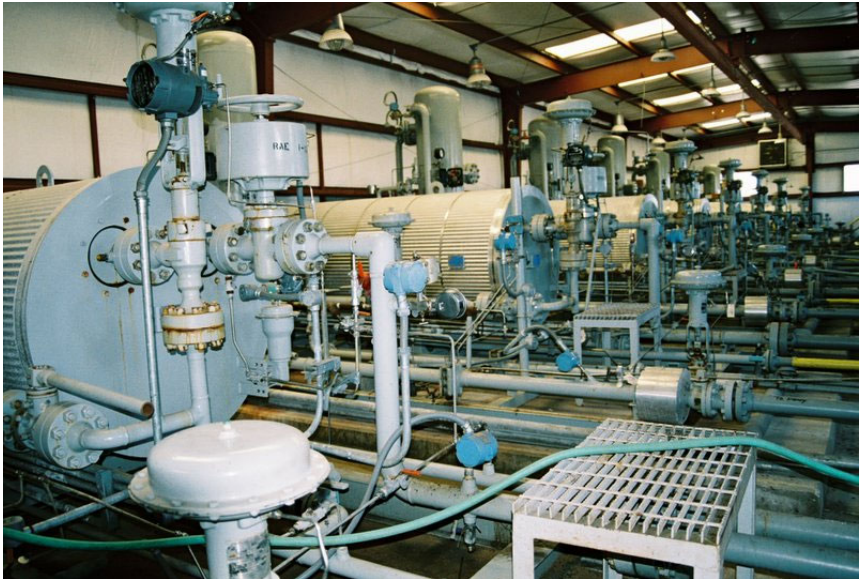The World Market for Gas Flow Measurement, 4th Edition: Core Study & Module A and B
This comprehensive August 2020 study on gas flow measurement is still available and relevant. The World Market for Gas Flow Measurement, 4th Edition combines with Module A: Applications and Strategies for Gas Flow Measurement, and Module B: Gas Production, Consumption, and Flow Measurement in the Oil & Gas Industry examine the gas flow measurement market both worldwide and regionally. We cover all flow technologies used in the market so that suppliers have the data they need to make informed decisions and achieve higher returns.
Flow Research has been following the gas flow market regularly since the first edition of our worldwide gas flow measurement study in 2004. Since then, gas market has market has evolved considerably — and experienced extraordinary growth in the last decade.
The natural gas revolution
Like coal and petroleum, natural gas is a fossil fuel. Like air, natural gas is a mixture of gases, including methane, ethane, propane, butane, and other alkanes. Natural gas is found in the ground, along with petroleum. It is extracted and refined into fuels that supply a significant portion of the world’s energy supply. The world community has welcomed the seeming abundance of natural gas because it:
- Is available now to help meet energy needs around the world
- Currently enjoys a favorable price point due to its surging supply
- Can be delivered in a number of forms and through a variety of means, making it a highly versatile commodity and potentially lowering its distribution costs
- Is considered a relatively clean alternative to crude oil and petroleum fuels – an important factor in a world becoming convinced of the need to implement environmental protections now
Major new demands from China, India, and other developing economies have spurred the search for new sources of energy. At the same time, discoveries of new gas fields and production methods — including new extraction technologies — have boosted natural gas availability and increased the complexity of its management.
Natural gas production is still found primarily in traditional topside locations, but is increasingly found offshore and even in subsea locations that require an evolution of line sharing and pooling technologies. Most recently, gas production has begun to include the use of floating LNG ships.
Compressed natural gas (CNG) has taken on importance as a source of fuel for alternative energy vehicles. Vehicles powered by natural gas are highly efficient, and emit significantly lower amounts of carbon monoxide, nitrogen oxide, and pollutants harmful to the ozone layer than gasoline powered vehicles. CNG-powered vehicles are fueled at filling stations that are very much like gasoline stations, and several companies have created flowmeters specifically designed for these stations.
All of these changes are stretching the limits of gas flow measurement applications.
Great time to explore the gas flow market
We believe this is an optimal time to quantify the growth in the gas flow measurement market, and to take an in-depth look at its present and future prospects. Our user interviews show that current interest in natural gas flow measurement is at a high. In addition, opportunities are emerging in the measurement of other gases as well.
The core study, Module A, and Module B each present different sets of data and views of the market. They are designed to be a complementary set to give you the best understanding of the whole market, but can also be purchased separately.
The Core Study:
- Determines worldwide market size for gas flow measurement in 2019 for each technology used in this market and forecast market growth through 2024
- Analyzes factors contributing to and limiting growth
- Identifies market growth sectors
- Provides average selling prices in this market worldwide and by region
- Determines supplier market shares for the gas flow measurement market in 2019 worldwide and by technology type
- Provides company profiles of the main suppliers of flowmeters used for gas flow measurement
- Analyzes the gas flow measurement products of the main suppliers in this market
Module A:
- Reports on shipments worldwide for each flowmeter type by application
- Defines and explains gas types and gas applications
- Examines strengths, weaknesses and specific applications for each gas flowmeter type and provide strategies for competing in these markets
Module B:
- Provides a world view of the oil & gas market from multiple perspectives and identify growth areas and growth factors
- Examines the oil & gas industry flow measurement market by regions
- Reports on shipments for flowmeters in the oil & gas industry for each region by flowmeter type and forecast growth rates
- Provides data on each region’s natural gas production and consumption and forecast each region’s natural gas production and consumption
- Discusses regional factors and political developments and how they may affect market forces in the near future
We closely followed the balance of supply and demand in the oil markets in the first five months of 2020. On April 12, 2020, OPEC and the G20 nations agreed to a series of supply cuts extending into 2022. These cuts began on May 1, and are already having a positive effect on oil prices. However, demand for refined fuels has plummeted as people drive their cars less and airplane travel is dramatically reduced. These events also have an effect on the natural gas and gas flow measurement market. Our forecasts in these studies take these events into account.
December 2020 article by Jesse Yoder: The Road to Clean Energy Winds Through Natural Gas
